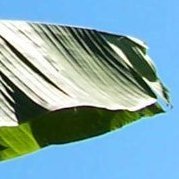Domestic Fish Pond
-
Recently Browsing 0 members
- No registered users viewing this page.
-
Topics
-
-
Popular Contributors
-
-
Latest posts...
-
79
Tourism Israel-Iran Conflict Puts a Damper on Thailand's Tourist Dreams
Here's a recent report of a couple of them. https://aseannow.com/topic/1361888-two-australian-men-surrender-to-pattaya-police-after-brawl-with-foreigner-over-unpaid-bill/ -
18
NZer requesting advice on approach to Non-O visa with wife under 50
I'm not quite sure how to explain this to you and I'd be grateful if you helped me by answering the following questions: 1. How much does the single-entry Thai visa for the purpose of travelling to Thailand for the reason of retirement cost in your home country? 2. How much is the equivalent of that price in Thai Baht? -
137
Dr Aseem Malhotra - White House insiders say the MRNA shot will be pulled from the market
I guess you don't agree with me then Jimmy bud. -
421
BREAKING NEWS Trump Confirms Surprise US Airstrikes on Iran’s Nuclear Sites, Including Fordo
https://finance.yahoo.com/news/bombing-iran-nuclear-sites-complicates-132948201.html Satellite Images Undermine Trump’s Claim Iran’s Atomic Sites Destroyed Trump said heavily fortified sites were “totally obliterated” late Saturday, but independent analysis has yet to verify that claim. Satellite images taken on Sunday of Fordow and distributed by Maxar Technologies show new craters, possible collapsed tunnel entrances and holes on top of a mountain ridge. They also show that a large support building on the Fordow site, which operators may use to control ventilation for the underground enrichment halls, remained undamaged. There were no radiation releases from the site, the IAEA reported. US Air Force General Dan Caine told a news conference on Sunday that an assessment of “final battle damage will take some time.” -
79
Tourism Israel-Iran Conflict Puts a Damper on Thailand's Tourist Dreams
Perhaps, the Israelis, stand out for some, because some people wish to confirm their prejudice? Is it any different than the Africans being stereotyped as drug pushers and thieves. A couple of my Thai friends refer to opportunistic thieves as "Nigeria", as in watch your bag, because there are Nigeria (sic). Not fair and inaccurate. Particularly when there are no Nigerians let alone black people where we are and the thieves at our local beach are usually Europeans. -
137
Dr Aseem Malhotra - White House insiders say the MRNA shot will be pulled from the market
Mosquitoes have killed more than anything else in the world
-
-
Popular in The Pub











Recommended Posts
Create an account or sign in to comment
You need to be a member in order to leave a comment
Create an account
Sign up for a new account in our community. It's easy!
Register a new accountSign in
Already have an account? Sign in here.
Sign In Now